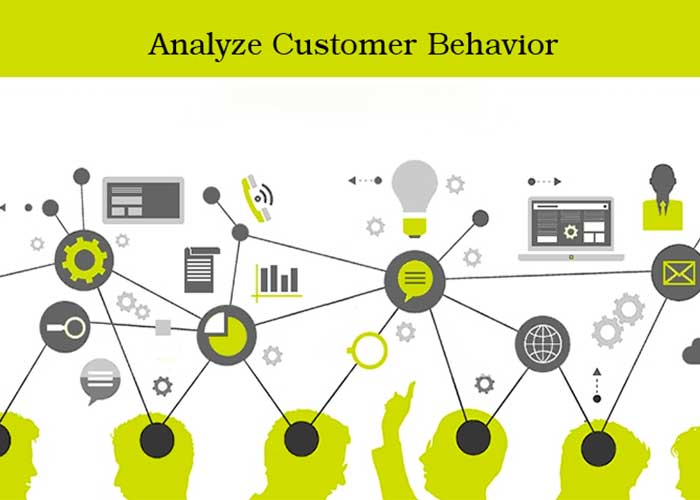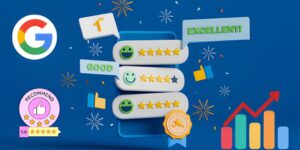
There’s a lot of hype around big data, but it can be intimidating to use and understand. You might wonder how you can take advantage of all this information to improve your marketing campaigns. The good news is that there are several techniques you can use to make better decisions with data. We’re going to go over some tips on how to leverage big data and take your marketing efforts up a notch!
1. Use It As A Guideline
While data is great for telling you what’s happening, it can also serve as a guideline. For example, if you have a marketing campaign that isn’t producing the way you want it to, look at your goals and see how your campaign is performing against them. If you find that the campaign is doing well but not quite hitting those numbers, then maybe it’s time to make some changes!
You can use this same idea when working with product development teams: are they meeting their targets? If so, fantastic! But if they’re not hitting their targets or achieving milestones on time, then maybe it’s time for some adjustments (or even rethinking). In all aspects of business (and life), having data available allows us to make better decisions because we know what we need versus what we simply hope will happen.
2. Collaborate On Solutions
You don’t have to go it alone. Collaboration is the key to success. You must collaborate with others who have different skills and perspectives, so they can help you make better decisions. Collaboration also helps you learn, grow and get things done faster—and it allows you to come up with ideas that are bigger than any one person could have thought up on their own!
3. Identify Patterns Through Machine Learning
Machine learning is a type of artificial intelligence that uses algorithms to identify patterns in data. It can be used to predict future outcomes and make better marketing decisions, such as what content your audience will be most interested in.
When you use machine learning, the computer learns how to do something by example and practice. In this case, it will learn what content it should recommend based on what has worked well in the past.

4. Craft Custom Lead Generation Messages
According to R2 certified electronics recycling company Big Data Supply inc, to improve the results of your campaigns, you need to create personalized lead generation messages relevant to the customer. Customers are more likely to respond to a message that is relevant to them, so if you can make your messaging more specific and unique based on the interests of each individual recipient of your email or text campaign, it will result in higher conversion rates.
One way you can do this is by using dynamic content fields in your marketing automation software. Dynamic content fields allow you to take data points from a contact’s profile and use it as a variable within one of their lead generation forms or email templates.
So instead of sending all recipients an identical message about why they should buy from your company, for example (which makes it seem like you don’t care about them), each person will receive an individually tailored message based on what they have previously expressed interest in when filling out their form or survey answers.
5. Contextualize Your Data
Another step in leveraging big data is making sure that you’re collecting the correct information. This means collecting data that is relevant to your business and its needs. If you’re a restaurant, for example, then you will want to keep track of how many customers enter your establishment and how much money they spend during their visit.
Big data also needs to be specific to your business and its goals. Data can only be helpful if it allows you to make meaningful business decisions. This means knowing why a customer visited or how much money they spent on each visit (or even what items were purchased). In other words, the more granular the data becomes—the better!
6. Evaluate ‘Propensity To Buy’
We’ve already covered how to track purchases, but understanding the customer’s propensity to buy is about much more than simply tracking what they’ve bought. You should also look at your customer’s browsing history and online behavior.
What do they do with their time on your site? Do they visit certain pages regularly or quickly skim through the home page before leaving? Which pages have they bookmarked? What kind of content do they engage with most often: blog posts, ebooks, video tutorials, or something else entirely?
This information can help you determine what elements of your website will most likely draw in new leads and convert them into customers. For example, if someone has been bookmarking all the pages on your site for several months but never makes a purchase – maybe he doesn’t like ordering from his phone!
Or perhaps those videos were not converting well enough for people who aren’t tech-savvy enough to understand them (and so end up abandoning them). This could mean that instead of spending money on designing videos that don’t convert well anymore, it might be better to invest in other types of lead generation methods such as blogging or social media marketing instead.
7. Analyze Customer Behavior
Customer behavior analysis helps you understand your customers and learn what they want. This can help you create a better experience for them, which leads to more sales and happy customers.

Here are some ways to analyze customer behavior:
- Understand how they’re interacting with you (compare statistics like page views, conversion rates, bounce rates, and time spent on site).
- Figure out where they’re coming from (which channels are driving traffic).
- Determine what they’re doing once they arrive at your site or app (what pages do they visit first? Which pages take the longest to load?)
In addition to helping you better understand your customer’s needs, this kind of analysis helps ensure that their experience is as positive as possible—and therefore makes it more likely that they will become repeat visitors.
Conclusion
The bottom line is this – big data can be intimidating, but it doesn’t have to be. Many people are using it to make their lives easier, and the same goes for businesses!
If you’re looking for a way to improve your marketing efforts or just want more information about what your customers want, then this is the right place for you. By following these tips and tricks, we guarantee that your business will be making better decisions in no time at all.






